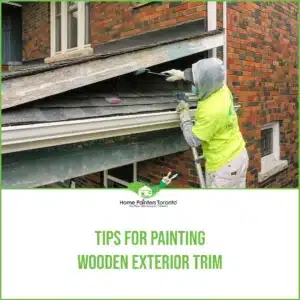
Stripping paint from wood can be a daunting task, especially if you’re new to the process. But fear not! In this blog post, we’ll provide some essential tips and tricks to make paint stripping a breeze. Whether working on a small piece of furniture or a large wooden surface like a stripping deck, these tips will help you achieve the best results possible. So, let’s dive in and learn how to strip paint from wood like a pro!
Nailing the Perfect Painting Service in St James Town
Are you tired of the same old paint colour on your wood? Or maybe it’s peeling so badly that you desperately need a paint stripping job in addition to a fresh coat. Removing paint from wood can’t be that hard, right? Unfortunately, all five tips to help you strip paint from wood involve getting your hands dirty. There are various methods when it comes to paint stripping. Let’s go over some of the easier ways to strip paint!
Safety First
Before starting any paint stripping project, it’s crucial to prioritize safety. Make sure to:
• Wear appropriate protective gear, including gloves, safety glasses, and a mask.
• Work in a well-ventilated area to avoid inhaling harmful fumes.
• Keep children and pets away from the work area.
Choosing the Right Tools and Materials
Selecting the right tools and materials for your paint stripping project is essential for success. Here’s what you’ll need:
Paint stripper for wood: Choose a paint stripper specifically formulated for wood. There are various types, including liquid, gel, and paste. Each type has pros and cons, so choose one that best suits your needs and preferences.
Scraper: A good quality scraper is essential for removing paint. Opt for one with a sharp edge and comfortable grip.
Brushes: You’ll need a few different brushes for applying the paint stripper and cleaning the wood. A natural bristle brush is ideal for applying the stripper, while a nylon brush is perfect for scrubbing the wood during cleaning.
Steel wool: Fine steel wool is great for removing stubborn paint residue.
Plastic sheeting: Use plastic sheeting to protect surrounding surfaces from paint stripper and debris.
Materials You Will Need for paint stripping
• Safety Goggles
• Gloves
• Face Mask
• Electric Sander
• Sandpaper
• Rags
• Broom
• Blower
• Heat Gun
• Bucket of Water
• Paint Scraper
• Varnish
• Paintbrush
• Chemical Stripper
• Lacquer Thinner
Preparing the Work Area
Before you strip paint from wood, preparing the work area is essential. Follow these steps:
- Remove any hardware or fixtures from the wood, if possible.
- Clean the surface of the wood to remove any dirt, dust, or debris.
- Lay down plastic sheeting to protect the surrounding surfaces and flooring.
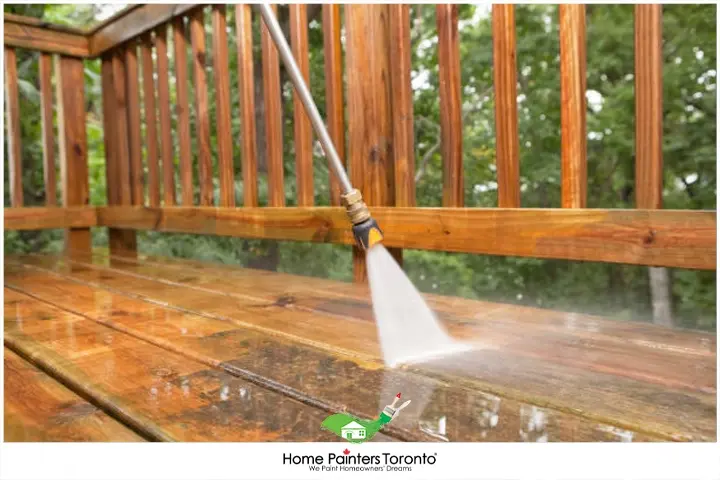
Paint Stripping Techniques
There are several techniques you can use to strip paint from wood. Here are some of the most effective methods:
1. Sand the Paint to Remove It
• You can remove paint from wood with sandpaper. Using an electric sander will make the process of paint removal faster than by hand.
• Sand with the rough grain first and then use the soft grain, which will polish the wood afterwards.
• When sanding, follow the wood grain so you don’t ruin the wood siding.
• Brush the surface clean with a rag and use a broom and blower to get rid of the excess debris.
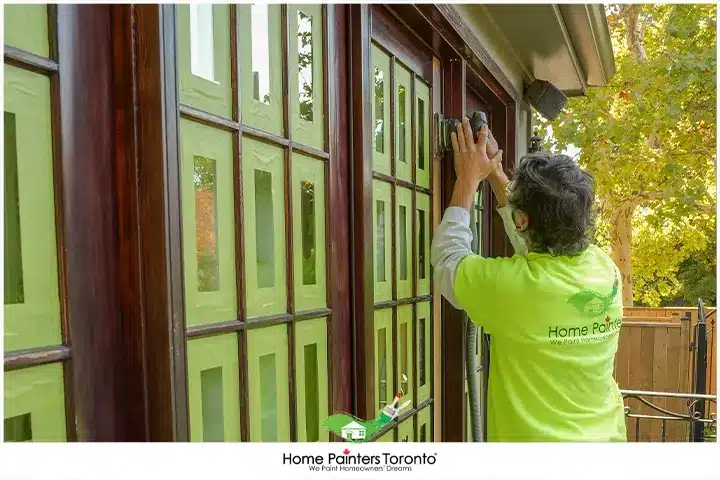
2. Three Coats of Varnish
• Using a paintbrush, apply the varnish using crisscrossing strokes.
• After letting the first coat dry, sand it off, then apply another coat. Repeat the process once more after that. These three coats of varnish help penetrate and remove the paint from the wood siding.
• After sanding the wood for the last time, wipe it clean.
3. Paint Stripping with a Heat Gun
• Using a heat gun is one of the easier methods to remove paint from wood. However, it can be tricky for the inexperienced because it requires many precautions. Ensure you know how to use a heat gun on wood siding and follow these instructions closely to avoid accidents.
• Wear safety goggles, a face mask, and gloves to protect your face and hands. Keep a bucket of water close by, just in case.
• Your goal is to heat the wood without burning it, and the heat gun should be carefully positioned 6 to 8 inches above the surface of the painted wooden siding.
• Move the heat gun side to side from top to bottom, or vice versa.
• The heat will cause the paint to bubble. Scrape it off with a paint scraper and continue until all has been removed.
• Sand the surface smoothly.
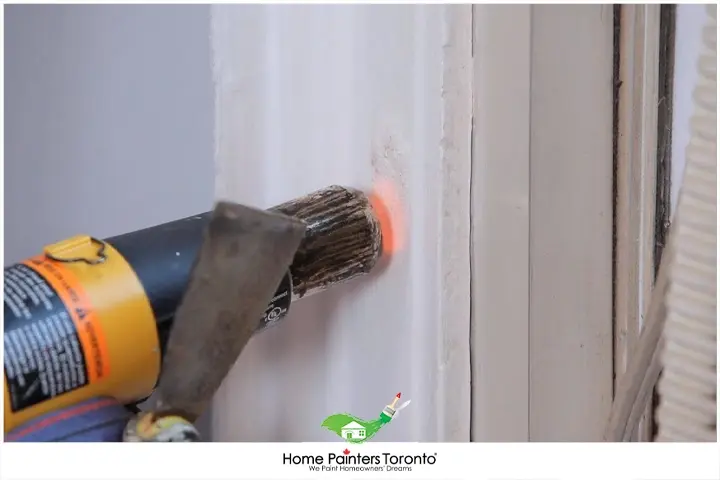
4. Scrape Away Paint from the Siding
• This is a valid way to remove paint from wood, but using a scraper can tire you out quickly and is not recommended when handling a large area.
• Scrape the paint off of the wood in straight lines.
• Remember that you will need to sharpen your scraper often.
• Once you have finished, clean the surface and sand it smooth.
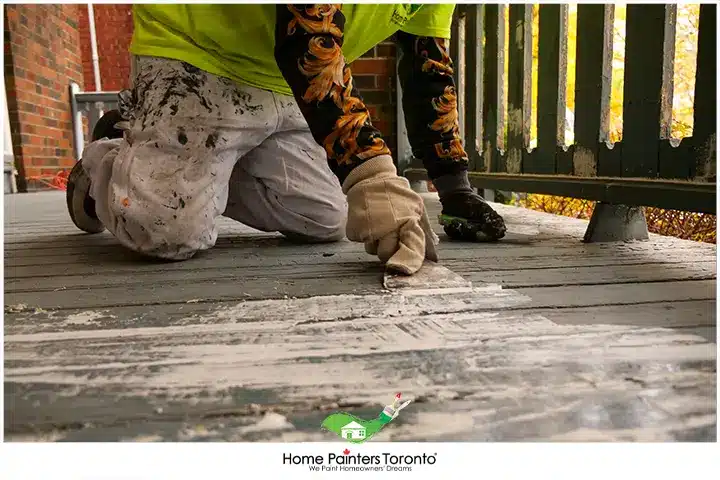
5. Chemical Stripper/Lacquer Thinner
How to use paint stripper on wood:
• Find the right stripper for this project based on the wooden surface you’ll be stripping the paint from.
• Shake the can of chemical stripper and pour it into a container. Use a paintbrush to apply it to the surface.
• If you use a spray, try spraying it 3-5 inches from the surface.
• When applying the chemical stripper, make sure to brush in one direction, never coating the same spot twice.
• After application, you normally need to wait half an hour to an hour for the results to show.
• Once enough time has passed, scrape away the paint in a circular motion.
• If you are using lacquer thinner, put on gloves before soaking a cotton ball in the substance.
• Apply it to the wooden surface to remove the paint.
• Wash the wood surface and sand smoothly.
Cleaning and Finishing
Once you’ve successfully stripped the paint from the surface, it’s essential to clean the area and apply a finish or protective coating if necessary. Follow these steps:
• Use a nylon brush and warm, soapy water to scrub the surface. This will remove any remaining paint residue and chemicals from the paint stripper.
• Rinse the surface thoroughly with clean water and allow it to dry completely.
• Lightly sand or buff the surface, if necessary, to smooth any rough spots.
Apply a finish or protective coating, such as paint, varnish, or sealant, to protect the surface and enhance its appearance.
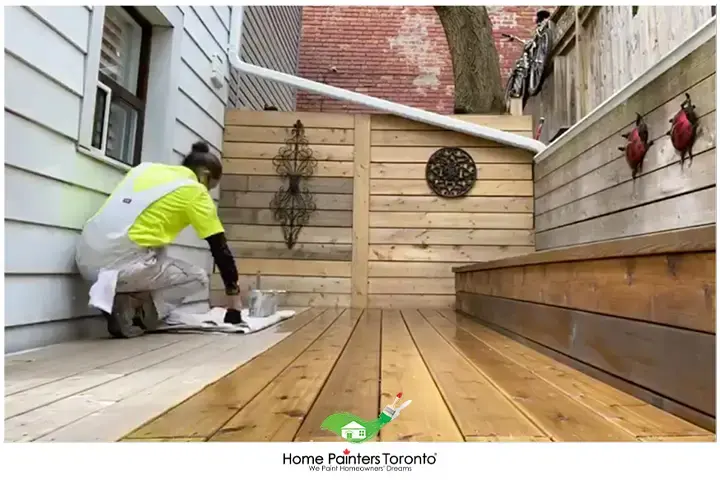
By following these paint-stripping tips, you’ll be well on your way to achieving professional results. Remember to prioritize safety, choose the right tools and materials, and be patient throughout the process. With a little practice, you’ll be a paint-stripping pro in no time!
Don’t forget to check out our Pinterest page for all sorts of exterior painting inspiration!
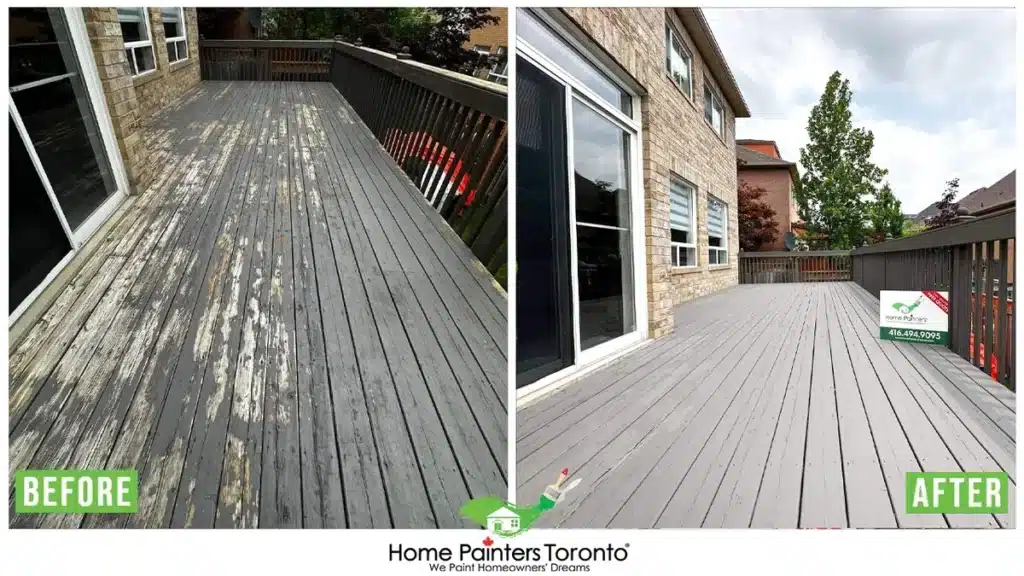
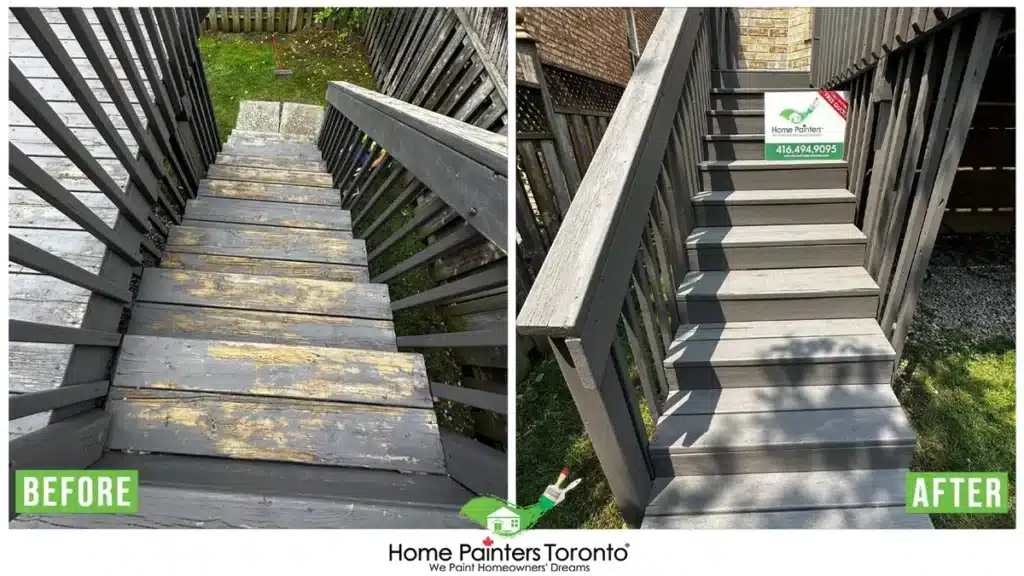
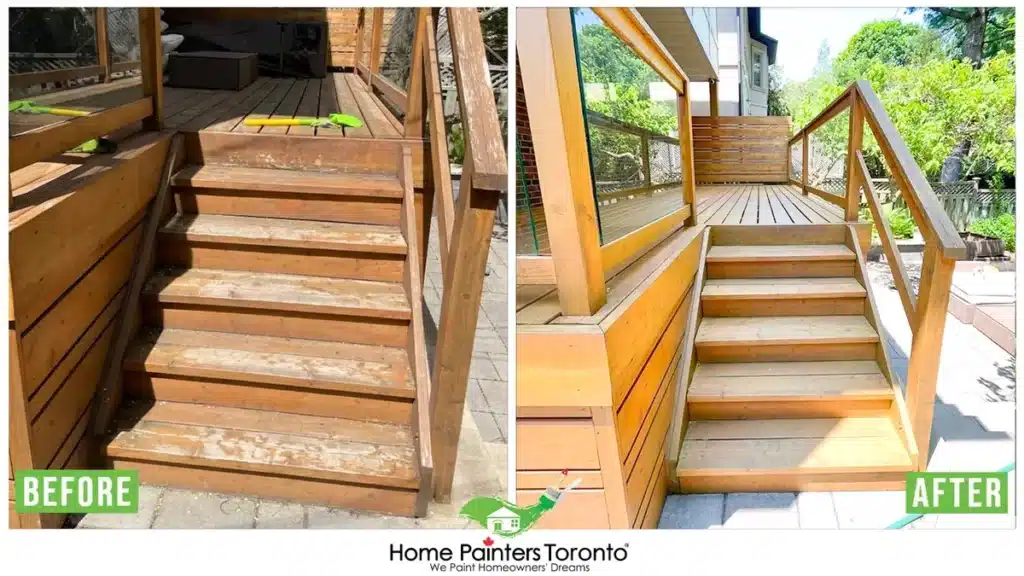
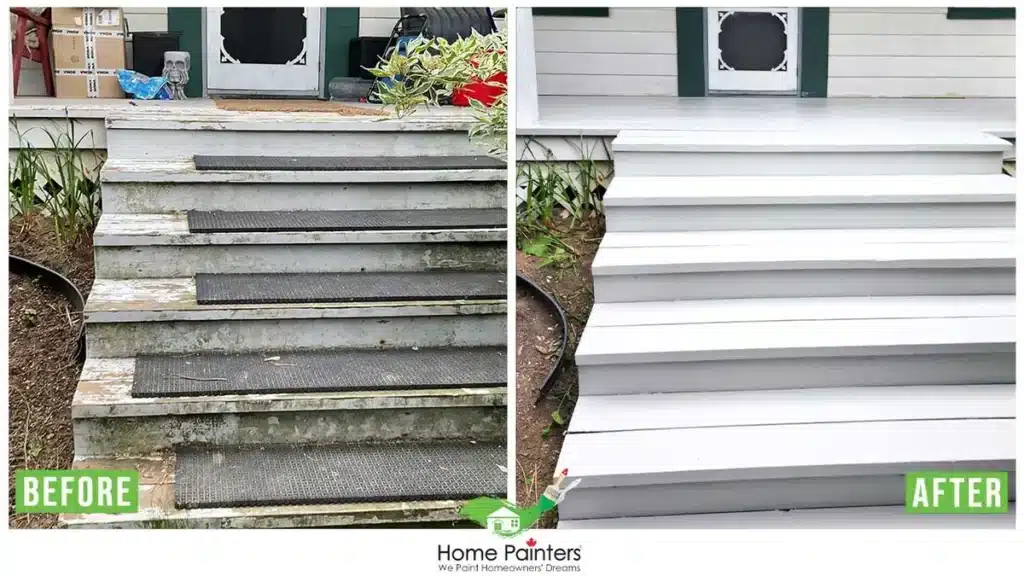
Most Interesting Blogs Related to
“5 PAINT STRIPPING TIPS FOR WOOD”
With these paint stripping tips for wood, you have the knowledge to help you no matter which method you choose. If you would like some assistance with this, give Home Painters Toronto, a top-rated Residential and Commercial Painting Contractor in Toronto, a call! Call us NOW at 416-494-9095 or email [email protected] for a free consultation about your strip paint issues. And don’t forget to follow us on all our social channels below!




